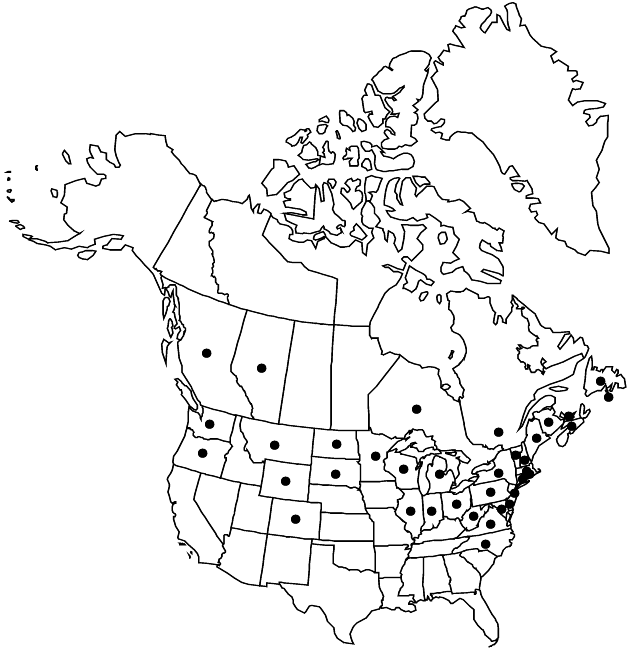Antennaria howellii subsp. petaloidea
Brittonia 41: 397. 1989.
Plants 8–35 cm. Stolons 4–9 cm (leaves along stolons smaller than in rosettes at ends). Basal leaves 1 (–3) -nerved, cuneate-oblanceolate, spatulate, or spatulate-obovate (without distinct petioles), 15–45 (–65) × 5–20 mm, tips mucronate, faces abaxially tomentose, adaxially gray-pubescent to floccose-glabrescent. Cauline leaves linear, 10–35 mm, mid and distal flagged. Heads 4–10 (–15) in corymbiform arrays. Involucres: staminate (uncommon) 6–6.5 mm; pistillate 7–11 mm. Phyllaries distally white or cream. Corollas: staminate 3–4 mm; pistillate 4–6.5 (–8) mm. Cypselae 0.8–1.7 mm, minutely papillate; pappi: staminate 4–4.5 mm; pistillate 5.5–8 mm. 2n = 56, 84 (under A. neodioica).
Phenology: Flowering mid spring–early summer.
Habitat: Pastures, dry fields, openings in woodlands and forests, and rock barrens
Elevation: 0–2200 m
Distribution

St. Pierre and Miquelon, Alta., B.C., N.B., Nfld. and Labr. (Nfld.), N.S., Ont., P.E.I., Que., Colo., Conn., Del., Ill., Ind., Maine, Md., Mass., Mich., Minn., Mont., N.H., N.J., N.Y., N.C., N.Dak., Ohio, Oreg., Pa., R.I., S.Dak., Vt., Va., Wash., W.Va., Wis., Wyo.
Discussion
Subspecies petaloidea is most common in the eastern half of the range of Antennaria howellii and is frequent as far west as British Columbia and Washington. Its primary sexual progenitors include A. plantaginifolia and A. neglecta (R. J. Bayer 1985).
Selected References
None.